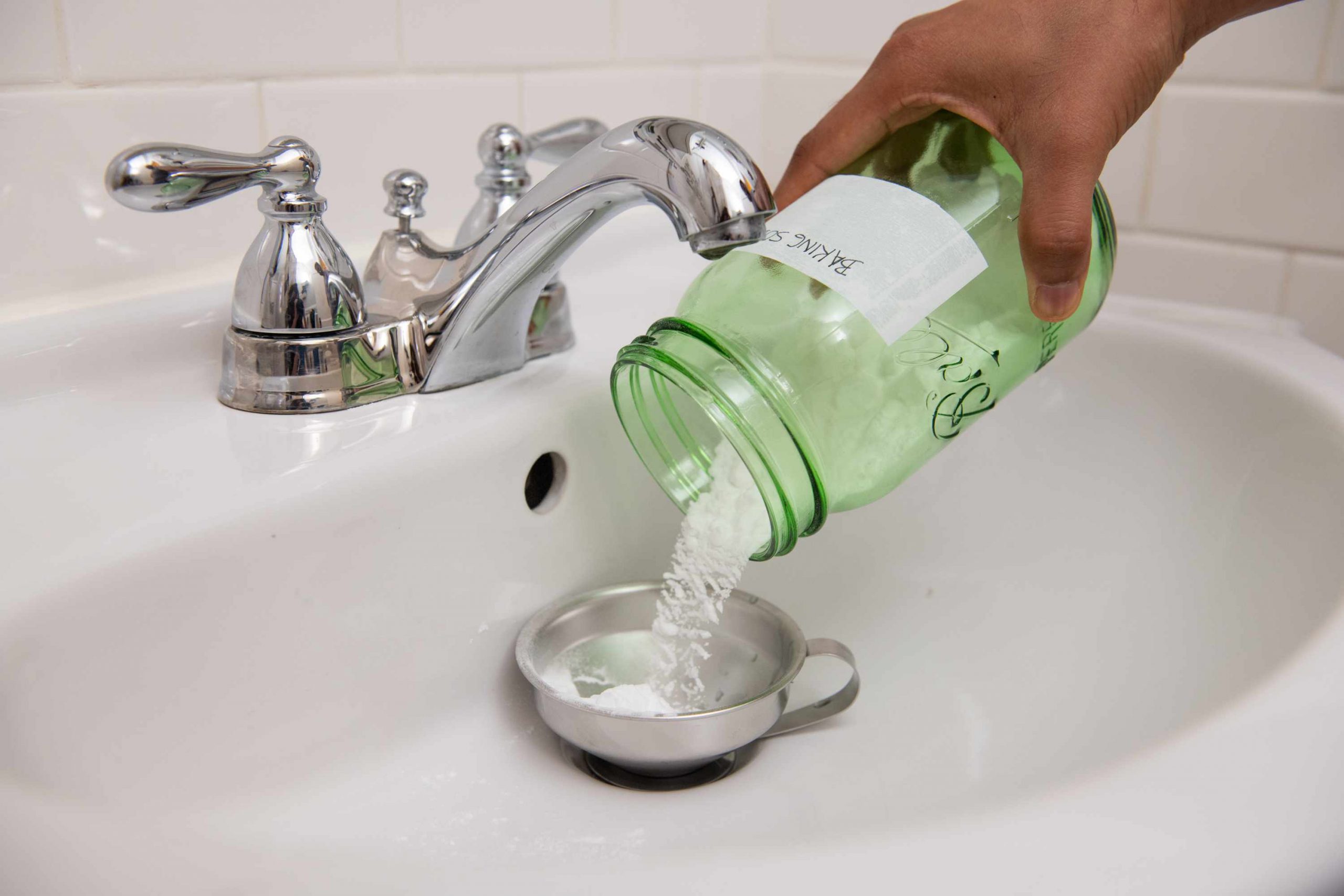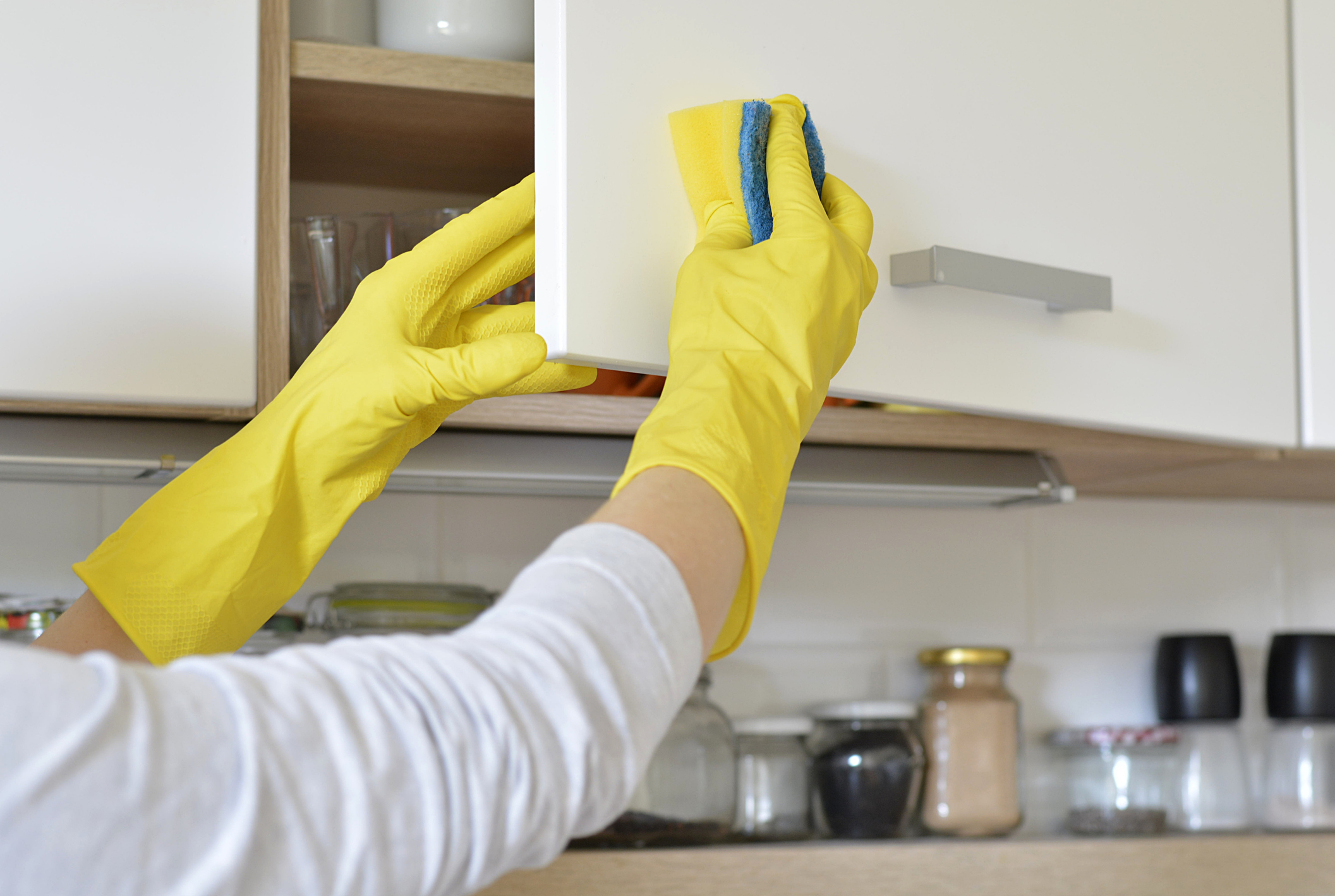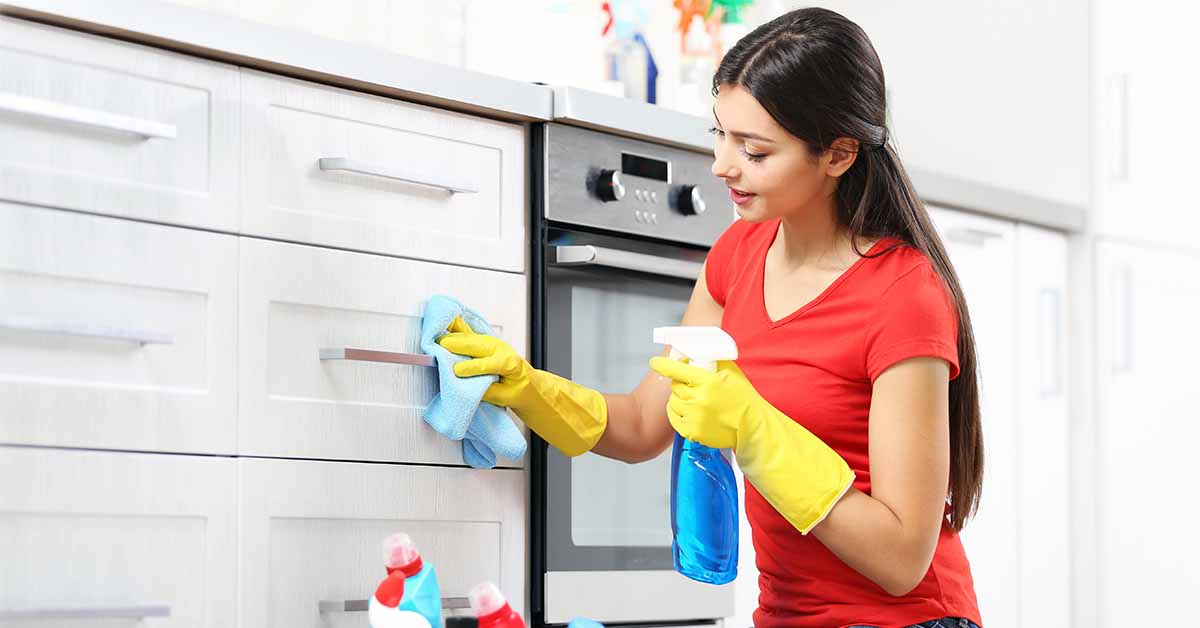The Power of Vinegar and Baking Soda for Kitchen Cabinet Cleaning: Cleaning Kitchen Cabinets With Vinegar And Baking Soda

You’re probably thinking, “Vinegar and baking soda? That’s it? No fancy chemicals?” Well, you’d be surprised at what these humble household staples can do. They’re actually a killer combo for cleaning your kitchen cabinets, leaving them sparkling and smelling fresh.
The Science Behind the Magic
Vinegar and baking soda are a match made in cleaning heaven, thanks to their chemical properties. Vinegar, which is acidic, cuts through grease and grime, while baking soda, which is alkaline, neutralizes odors and acts as a gentle abrasive. When combined, they create a powerful cleaning solution that can tackle even the toughest messes.
Benefits of Natural Cleaning
Forget harsh chemicals and synthetic fragrances. Vinegar and baking soda are all-natural and safe to use around your kitchen, especially if you have kids or pets. They’re also biodegradable and eco-friendly, so you can feel good about cleaning your cabinets without harming the environment.
Cleaning Different Kitchen Cabinet Materials
Vinegar and baking soda can be used to clean various kitchen cabinet materials, each requiring a slightly different approach.
Cleaning Wood Cabinets
Wood cabinets are a classic choice, but they can get greasy and dirty over time. To clean them, mix equal parts vinegar and water in a spray bottle and apply it to the cabinets. Let it sit for a few minutes, then wipe it off with a clean cloth. For stubborn stains, make a paste of baking soda and water and apply it to the stain. Let it sit for a few minutes, then scrub it with a damp cloth.
Cleaning Laminate Cabinets
Laminate cabinets are durable and easy to clean. They can withstand the occasional spill or splatters, but they can also accumulate grime and fingerprints. To clean them, simply mix a solution of vinegar and water and spray it on the cabinets. Wipe it down with a clean cloth, and you’re good to go.
Cleaning Painted Cabinets
Painted cabinets can be a bit trickier to clean, as you don’t want to damage the paint. A gentle approach is key. Mix a solution of vinegar and water, and test it on a small, inconspicuous area of the cabinet first. If it’s safe, spray the solution on the cabinets and wipe them down with a clean cloth.
Cleaning Glass Cabinet Doors
Glass cabinet doors are prone to smudges and fingerprints. To clean them, mix a solution of vinegar and water and spray it on the glass. Wipe it down with a clean microfiber cloth, and you’ll have crystal-clear doors.
Step-by-Step Guide to Cleaning Kitchen Cabinets with Vinegar and Baking Soda

Cleaning your kitchen cabinets with vinegar and baking soda is a simple and effective way to remove grease, grime, and dirt, leaving them sparkling clean. This method is environmentally friendly and cost-effective, using readily available ingredients.
Preparing the Cleaning Solution
To prepare the cleaning solution, you’ll need white vinegar and baking soda.
Mix equal parts of white vinegar and water in a spray bottle.
The vinegar acts as a natural disinfectant and degreaser, while the water dilutes it for safer application.
Applying the Cleaning Solution
Once the solution is prepared, you can start applying it to the cabinets.
- Spray the vinegar solution onto the cabinet doors and surfaces.
- Use a soft cloth to wipe the solution onto the cabinets, ensuring you cover all areas.
- For stubborn stains, you can make a paste by mixing baking soda with a small amount of water.
- Apply the paste to the stained areas and let it sit for a few minutes.
- Scrub the paste gently with a soft brush or sponge.
Wiping Clean
After applying the cleaning solution, it’s time to wipe everything clean.
- Use a clean, damp cloth to wipe away the solution and any remaining dirt or grease.
- Dry the cabinets with a clean, dry cloth.
Removing Stubborn Stains and Grease
For particularly stubborn stains or grease, you can try using a stronger cleaning solution.
Mix equal parts of baking soda and water to create a paste.
Apply the paste to the affected area and let it sit for a few minutes before scrubbing with a soft brush or sponge. Alternatively, you can use a commercial degreaser, but be sure to follow the manufacturer’s instructions carefully.
Beyond Cleaning

So, you’ve given your kitchen cabinets a good scrub with vinegar and baking soda, and they’re looking fresh and sparkly. But hold on, there’s more to this magical duo than just cleaning. Vinegar and baking soda are your secret weapons for keeping your kitchen cabinets looking their best for the long haul.
Deodorizing Kitchen Cabinets
Vinegar and baking soda are a dream team when it comes to banishing those pesky odours that can linger in your kitchen cabinets. Vinegar is a natural deodorizer, and its acidic nature neutralises unpleasant smells. Baking soda, on the other hand, is a powerful absorbent, soaking up odours like a sponge.
Here’s how to use them:
- Mix a solution of equal parts water and vinegar in a spray bottle and spritz the inside of your cabinets. Let it air dry completely.
- Place small bowls filled with baking soda in your cabinets to absorb odours. Replace the baking soda every few weeks or as needed.
Preventing Future Grime and Buildup
No one wants to spend their weekends scrubbing stubborn grease and grime off their kitchen cabinets. Vinegar and baking soda can help you stay ahead of the game and prevent buildup from even happening.
- Wipe down your cabinets regularly with a solution of water and vinegar. This will remove dust, fingerprints, and any minor spills before they have a chance to harden.
- Use baking soda to clean up spills immediately. Baking soda is a gentle abrasive that can help lift stains without damaging the finish of your cabinets.
- Avoid using harsh chemicals on your cabinets. These can strip away the protective finish and make them more susceptible to damage and grime.
Protecting the Finish of Kitchen Cabinets, Cleaning kitchen cabinets with vinegar and baking soda
Vinegar and baking soda are not only great for cleaning, but they can also help protect the finish of your kitchen cabinets.
- Vinegar helps to maintain the shine of your cabinets by removing any buildup that can dull the finish.
- Baking soda is a gentle abrasive that can help remove minor scratches and scuffs without damaging the finish.
Cleaning kitchen cabinets with vinegar and baking soda – Just as vinegar and baking soda cleanse and revitalize our kitchens, so too can we approach our lives with a similar intention. A gentle, natural approach to clearing clutter and negativity, much like the simplicity of cleaning with vinegar and baking soda, can bring a sense of peace and renewal.
Perhaps this renewed energy could be directed towards stainless steel cabinet with sliding doors , which offer a sleek and modern aesthetic to any kitchen, mirroring the clarity and order we strive for within ourselves. Whether it’s our physical space or our inner world, the act of cleaning and purifying brings a sense of harmony and allows us to move forward with renewed purpose.
The act of cleaning our kitchen cabinets with vinegar and baking soda can be a sacred ritual, a moment to reconnect with the essence of our home. It’s a time to let go of the old and embrace the new, a fresh start for our culinary adventures.
But as we cleanse the exterior, we might also consider the inner sanctum. Should we paint the inside of our cabinets, giving them a new layer of protection and vibrancy? should i paint the inside of my cabinets This decision, like all choices, is a reflection of our inner desires, our vision for our space.
Ultimately, the act of cleaning, whether internal or external, is a journey of self-discovery, a chance to align our physical space with our inner aspirations.
